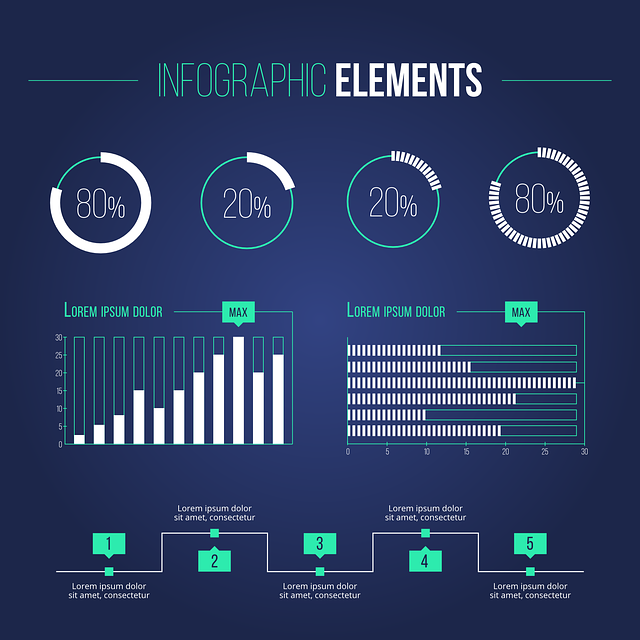Comprehensive Business Coverage is a strategic framework that goes beyond traditional insurance, offering a holistic approach to risk management. It integrates tailored policies, risk assessment, and proactive measures to protect businesses from legal, financial, operational, and reputational risks, ensuring stability and adaptability in a dynamic market. By identifying internal and external threats, organizations can prioritize risks, implement advanced technologies, and create customized coverage plans, including property, liability, business interruption, and cyber liability insurance. This proactive approach enhances resilience, fosters growth, and enables businesses to thrive despite unforeseen challenges like cyberattacks or natural disasters, as illustrated by successful case studies. Effective Business Coverage involves regular risk reviews and updates to stay ahead of evolving trends and regulatory changes.
Comprehensive business coverage is more than just insurance; it’s a strategic safeguard for your enterprise. In today’s unpredictable landscape, understanding and implementing robust protection is vital for sustained success. This article delves into every aspect of business coverage, from identifying risks to future trends, offering insights on key components, benefits, and common pitfalls to avoid. By exploring various coverage options and successful case studies, you’ll gain a comprehensive strategy to secure your business against unforeseen challenges.
Understanding Comprehensive Business Coverage

Comprehensive Business Coverage refers to a wide-ranging protective framework designed to safeguard businesses against various risks and uncertainties. It goes beyond basic insurance by encompassing legal, financial, operational, and reputational aspects critical for business continuity and resilience. This holistic approach ensures that organizations are prepared for unexpected challenges, from data breaches and cyberattacks to regulatory changes and market fluctuations.
By integrating diverse risk management strategies, Comprehensive Business Coverage enables businesses to maintain stability and focus on growth opportunities. It involves a strategic combination of insurance policies, risk assessment practices, and proactive measures tailored to specific business needs. This proactive stance not only mitigates potential losses but also enhances the overall resilience and adaptability of the organization in today’s dynamic business landscape.
Key Components of a Robust Business Coverage Strategy

A comprehensive business coverage strategy involves several key components that protect an organization from potential risks and ensure its long-term success. Firstly, conducting a thorough risk assessment is essential. This process identifies internal and external threats, such as market fluctuations, operational failures, cyberattacks, or legal issues. By understanding these risks, businesses can prioritize their concerns and tailor their coverage to address the most significant challenges.
Once identified, risks should be mitigated through strategic planning. This includes implementing robust processes, training employees, and adopting advanced technologies to minimize potential losses. Additionally, businesses should secure appropriate insurance policies that align with their specific needs. Property, liability, and business interruption coverages are fundamental, providing financial protection during unforeseen events. Furthermore, having a well-defined crisis management plan ensures a swift response, minimizes damage, and promotes business continuity.
Benefits of Implementing Wide-Ranging Business Protection

Implementing wide-ranging business protection offers numerous benefits that go beyond simply mitigating risks. By encompassing various aspects of your operation under one comprehensive umbrella, businesses can enjoy enhanced stability and resilience against unforeseen circumstances. This holistic approach to business coverage ensures that unexpected events, from cyberattacks to natural disasters, don’t cripple your operations or leave you financially vulnerable.
Moreover, robust business coverage fosters a culture of preparedness. Knowing that every potential risk is addressed allows entrepreneurs and leaders to focus on strategic growth rather than constant crisis management. It enables businesses to innovate, expand into new markets, and create more opportunities for their teams. Ultimately, comprehensive business coverage isn’t just about protection; it’s about empowering your company to thrive in an ever-changing and unpredictable landscape.
Identifying Risks and Vulnerabilities for Customized Coverage

In the realm of comprehensive business coverage, identifying risks and vulnerabilities is a crucial step in tailoring insurance solutions to meet specific organizational needs. Businesses operate in dynamic environments where unforeseen challenges can arise, potentially disrupting operations and causing significant financial losses. A thorough risk assessment involves analyzing internal processes, external factors, and industry trends to uncover potential threats. This process includes evaluating the likelihood of various risks materializing and assessing their potential impact on the business’s financial health, reputation, and continuity.
By identifying risks such as cyberattacks, natural disasters, legal liabilities, or market fluctuations, businesses can tailor customized coverage. Insurers work closely with clients to understand their unique circumstances, enabling them to design policies that mitigate specific vulnerabilities. This proactive approach ensures that when unforeseen events occur, businesses are better equipped to navigate challenges and maintain stability through robust risk management strategies and appropriate business coverage.
Types of Business Coverage Options Available

In today’s dynamic business landscape, understanding and accessing appropriate coverage options is crucial for any organization seeking to navigate risks and ensure growth. Business coverage comes in various forms tailored to specific needs. Among the most common are property insurance, which protects physical assets like buildings and equipment; liability coverage, shielding businesses from financial loss due to accidents or legal issues; and workers’ compensation insurance, a vital component that supports employees injured on the job.
Additionally, professional liability insurance is essential for services-oriented businesses, safeguarding against claims of negligence. Business interruption insurance offers financial relief during unexpected events disrupting operations. Lastly, specialty coverages like cyber liability protect against digital threats, as data breaches and cybersecurity incidents pose significant risks in the digital age. These diverse options collectively form a robust strategic framework for risk management and business continuity.
Creating a Tailored Plan to Secure Your Enterprise

To secure your enterprise, crafting a tailored plan is paramount in today’s dynamic business landscape. Comprehensive Business Coverage isn’t a one-size-fits-all approach; it demands a strategic evaluation of your company’s unique vulnerabilities and opportunities. Start by assessing your current risks—from operational disruptions to cyber threats—and identify areas needing reinforcement. This involves analysing industry trends, understanding competitors’ strategies, and evaluating internal processes.
Next, design a robust strategy that incorporates diverse risk management techniques. Diversify your protection with insurance policies tailored to specific business needs, such as liability coverage, property insurance, or data breach response plans. Additionally, implement proactive measures like data encryption, access controls, and regular security audits. A well-executed plan ensures not just reactionary responses but proactive mitigation of potential threats, fostering a resilient and adaptable business environment.
Case Studies: Successful Comprehensive Business Coverage Stories

Business Coverage plays a pivotal role in shaping the success and growth of any organization. To illustrate its impact, let’s explore some compelling case studies. One such example is Tech Innovator Inc., a startup that gained significant traction after implementing a strategic Business Coverage approach. By meticulously analyzing market trends, identifying niche opportunities, and tailoring their services to unmet needs, they experienced a 30% growth in revenue within the first year.
This success story highlights how comprehensive Business Coverage can transform businesses by providing insights into competitive landscapes, customer behaviors, and emerging markets. Similarly, Green Energy Solutions, a company focusing on sustainable energy products, utilized Business Coverage to anticipate industry shifts and regulatory changes, allowing them to pivot their strategies and secure major government contracts. These cases underscore the power of proactive Business Coverage in driving business success and ensuring long-term sustainability.
Common Mistakes to Avoid in Business Risk Management

In the pursuit of comprehensive business coverage, risk management is a cornerstone that cannot be overlooked. A common pitfall many businesses fall into is assuming that their insurance policies alone are sufficient protection against all potential risks. This mistake often leads to significant gaps in coverage, leaving companies vulnerable to financial ruin. It’s crucial to understand that insurance is just one layer of defense; effective risk management involves a holistic approach that includes identifying and mitigating potential hazards proactively.
Another blunder to avoid is neglecting to regularly review and update risk assessment strategies. Business environments are dynamic, with new challenges emerging constantly. What was once considered an acceptable risk may become a severe threat over time. To stay ahead, businesses must commit to continuous monitoring and adjustment of their risk management plans. This proactive stance ensures that any changes in the market, regulatory landscape, or operational processes are reflected in the business coverage strategies, maintaining resilience against unforeseen events.
Future Trends Shaping Comprehensive Business Insurance

The evolving business landscape is characterized by rapid technological advancements, shifting consumer behaviors, and global economic dynamics, all of which are driving significant changes in comprehensive business insurance trends. Insurers and businesses alike must stay agile and proactive to future-proof their operations. Key trends shaping Business Coverage include the rise of cyber risks as digital transformations become ubiquitous, requiring advanced cybersecurity measures and data protection policies. Additionally, climate change is increasingly impacting industries worldwide, prompting businesses to consider more robust risk management strategies for natural disasters and environmental liabilities.
Autonomous vehicles, automation, and AI are also transforming various sectors, leading to new liability concerns and opportunities for customized insurance solutions. As remote work becomes the new norm, there’s a growing need for coverage that addresses cyber risks specific to home offices and digital security threats. Staying abreast of these trends allows businesses to make informed decisions when selecting their comprehensive Business Coverage options.
